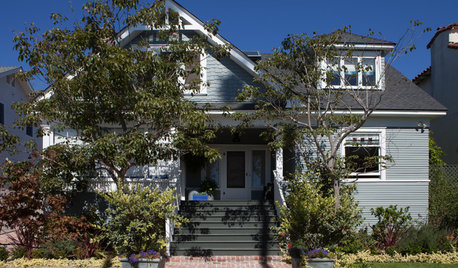Citrus Update/Issues
meisocal
11 years ago
Related Stories

YELLOWCitrus Hues Add Zest to Rooms
You almost don't need to clean when you wash your spaces with the refreshing colors of lemons, limes and oranges
Full Story
GARDENING GUIDESSpring Citrus Care Reaps Months of Sweet Rewards
Learn how to tend citrus trees in spring and ways to preserve their delicious fruit
Full Story
GARDENING GUIDESHow to Keep Your Citrus Trees Well Fed and Healthy
Ripe for some citrus fertilizer know-how? This mini guide will help your lemon, orange and grapefruit trees flourish
Full Story
COLORColor of the Week: 10 Tangy Ways with Citrus Green
Add some zest to your home with a little — or a lot of — lively lime
Full Story
APARTMENTSHouzz Tour: Refreshing Citrus Twist in a London Home
Orange, yellow and green accents wake up a neutral palette in a new 1-bedroom unit
Full Story
You Said It: Hot-Button Issues Fired Up the Comments This Week
Dust, window coverings, contemporary designs and more are inspiring lively conversations on Houzz
Full Story
DECORATING GUIDES10 Ways to Update a Victorian Living Room
Bring your period living room sensitively into the 21st century with these simple yet effective design tricks
Full Story
HOUZZ TOURSHouzz Tour: Dancing to the 1970s in an Updated Vancouver Home
The open floor plan and updated appliances have modern moves, but the lime green and wood paneling still do the hustle
Full Story
BEFORE AND AFTERSGray Cabinets Update a Texas Kitchen
Julie Shannon spent 3 years planning her kitchen update, choosing a gray palette and finding the materials for a transitional style
Full Story
HOUZZ TOURSHouzz Tour: A 1905 Cottage Gets a Major Family Update
Historic Boston meets outdoors Oregon in this expanded California home
Full Story





Fascist_Nation
hoosierquilt USDA 10A Sunset 23 Vista CA
Related Professionals
Windham Landscape Architects & Landscape Designers · Chattanooga Landscape Architects & Landscape Designers · Forest Park Landscape Architects & Landscape Designers · Fort Lee Landscape Architects & Landscape Designers · Horsham Landscape Architects & Landscape Designers · Kenmore Landscape Architects & Landscape Designers · Summit Landscape Architects & Landscape Designers · Clayton Landscape Contractors · Dickinson Landscape Contractors · Eagle Landscape Contractors · Parkland Landscape Contractors · Seymour Landscape Contractors · Tustin Landscape Contractors · Maple Heights Landscape Contractors · Laguna Beach Stone, Pavers & ConcretemeisocalOriginal Author
jakkom